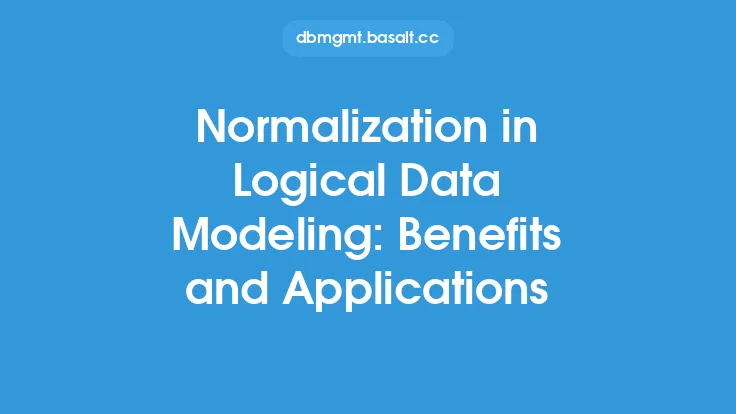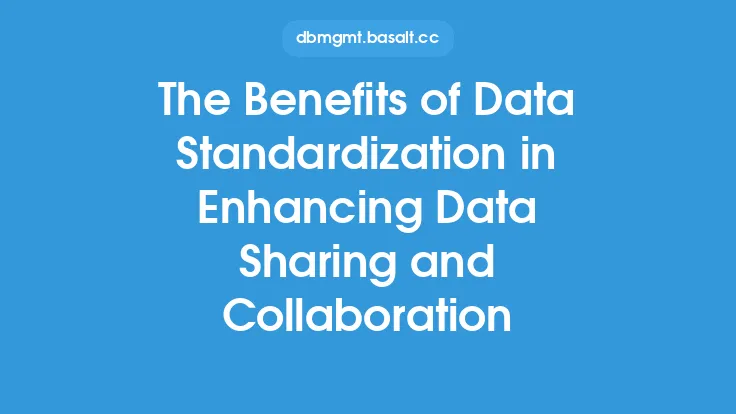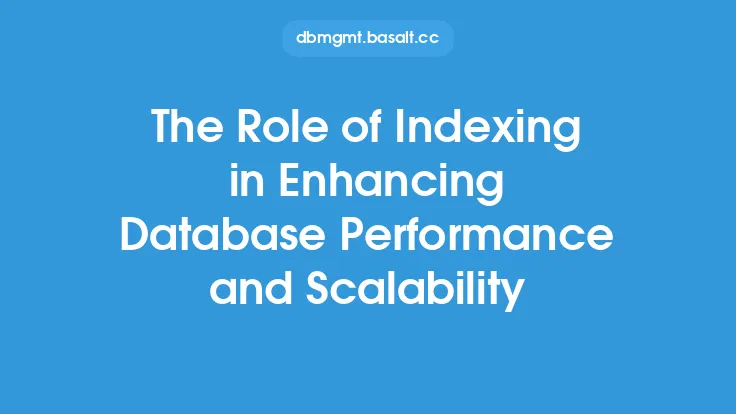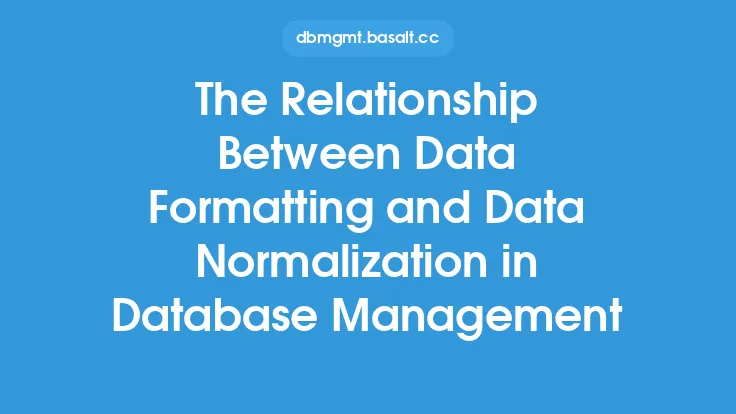Data normalization is a crucial process in data management that ensures data is consistent, accurate, and reliable. One key aspect of data normalization is data disaggregation, which involves breaking down aggregated data into its constituent parts. This process is essential in enhancing data normalization, as it allows for a more detailed and nuanced understanding of the data. In this article, we will explore the role of data disaggregation in enhancing data normalization and its importance in data management.
What is Data Disaggregation?
Data disaggregation is the process of breaking down aggregated data into smaller, more detailed components. Aggregated data refers to data that has been combined or grouped together, often to provide a summary or overview of a particular phenomenon. However, aggregated data can mask important details and trends, making it difficult to gain a deeper understanding of the underlying data. Data disaggregation helps to overcome this limitation by decomposing aggregated data into its constituent parts, allowing for a more detailed analysis and understanding of the data.
Benefits of Data Disaggregation
Data disaggregation offers several benefits in enhancing data normalization. Firstly, it allows for a more detailed and nuanced understanding of the data, which can help to identify trends and patterns that may be masked by aggregated data. Secondly, data disaggregation enables more accurate analysis and decision-making, as it provides a more complete and detailed picture of the data. Finally, data disaggregation can help to improve data quality, as it allows for the identification and correction of errors or inconsistencies in the data.
Types of Data Disaggregation
There are several types of data disaggregation, including temporal disaggregation, spatial disaggregation, and categorical disaggregation. Temporal disaggregation involves breaking down data into smaller time periods, such as from annual to monthly or daily data. Spatial disaggregation involves breaking down data into smaller geographic areas, such as from national to regional or local data. Categorical disaggregation involves breaking down data into smaller categories, such as from broad demographic categories to more specific sub-categories.
Techniques for Data Disaggregation
There are several techniques for data disaggregation, including data partitioning, data grouping, and data transformation. Data partitioning involves dividing data into smaller subsets based on specific criteria, such as time or geography. Data grouping involves combining data into smaller groups based on shared characteristics, such as demographic or behavioral traits. Data transformation involves converting data from one format to another, such as from aggregated to disaggregated data.
Challenges and Limitations of Data Disaggregation
While data disaggregation offers several benefits, it also presents several challenges and limitations. One of the main challenges is the potential for data loss or distortion, particularly when dealing with large or complex datasets. Additionally, data disaggregation can be time-consuming and resource-intensive, particularly when using manual methods. Finally, data disaggregation requires careful consideration of data quality and accuracy, as errors or inconsistencies in the data can be amplified during the disaggregation process.
Best Practices for Data Disaggregation
To overcome the challenges and limitations of data disaggregation, it is essential to follow best practices. Firstly, it is essential to carefully evaluate the data and identify the most appropriate disaggregation technique. Secondly, it is crucial to ensure data quality and accuracy, through data validation and verification. Finally, it is essential to document and track the disaggregation process, to ensure transparency and reproducibility.
Tools and Technologies for Data Disaggregation
There are several tools and technologies available for data disaggregation, including data management software, data analytics platforms, and data visualization tools. Data management software, such as databases and data warehouses, provide a foundation for data disaggregation, by allowing for the storage and manipulation of large datasets. Data analytics platforms, such as statistical software and data mining tools, provide advanced capabilities for data analysis and disaggregation. Data visualization tools, such as charts and graphs, provide a means of communicating and exploring disaggregated data.
Conclusion
In conclusion, data disaggregation plays a critical role in enhancing data normalization, by providing a more detailed and nuanced understanding of the data. Through the use of various techniques and tools, data disaggregation can help to identify trends and patterns, improve data quality, and support more accurate analysis and decision-making. While data disaggregation presents several challenges and limitations, following best practices and using appropriate tools and technologies can help to overcome these limitations and unlock the full potential of data disaggregation.





